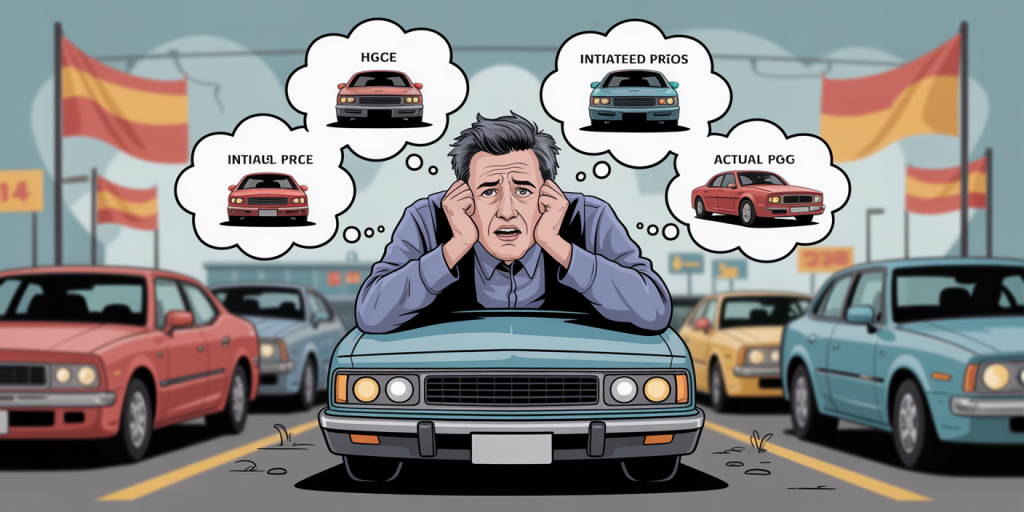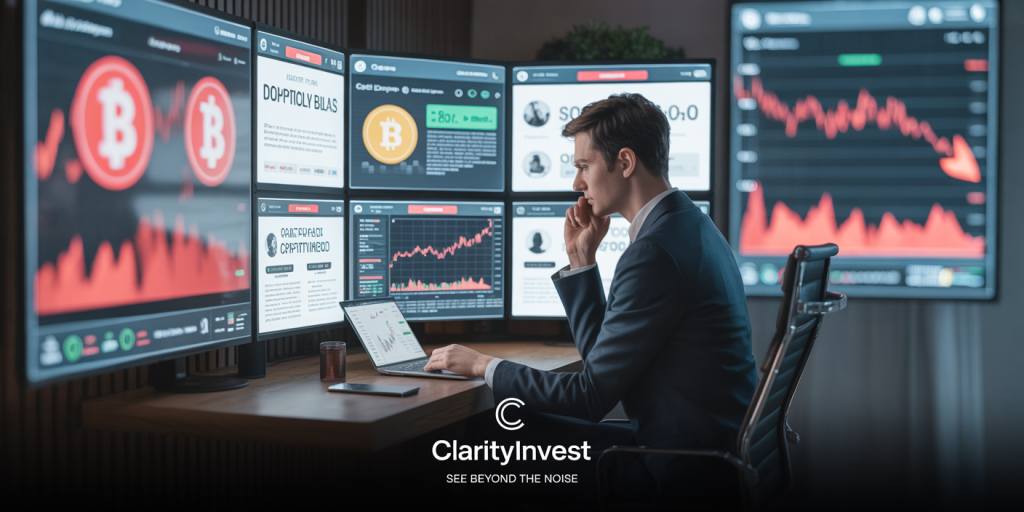In today’s fast-paced financial environment, making sound monetary decisions is more crucial than ever. Yet, despite access to vast amounts of information, individuals frequently fall prey to cognitive biases that negatively impact their financial health. These mental shortcuts, often subconscious, distort our judgment and lead to behaviors such as overspending, poor investment choices, and failure to save adequately. Recognizing these biases can be the first step in safeguarding your wallet and building long-term wealth.
According to a 2023 study by the National Endowment for Financial Education, nearly 70% of adults report that emotional or cognitive factors have influenced their financial decisions in ways they later regretted. Understanding the specific biases that contribute to costly errors provides actionable insights to make smarter financial moves and strengthen fiscal responsibility.
Anchoring Bias: The Trap of Initial Numbers
Anchoring bias occurs when individuals rely too heavily on the first piece of information they encounter — the “anchor” — when making decisions. This phenomenon is particularly evident in financial contexts such as price negotiations, investment valuations, and salary discussions.
For instance, when shopping for a car, the sticker price often serves as an anchor. If the price is listed as $30,000, buyers might perceive a discount to $28,000 as a great deal, despite the car’s true market value possibly being closer to $25,000. Research by Ariely et al. (2003) demonstrated that people’s willingness to pay for items can be significantly swayed by arbitrary anchors, including random numbers. This bias leads to overspending or accepting suboptimal deals because the initial reference sets unrealistic expectations.

Anchoring also hurts investment decisions. Investors may fixate on a stock’s historical high price, refusing to sell when its value drops, hoping it will rebound, despite deteriorating fundamentals. This bias impedes rational portfolio management and can erode long-term returns.
| Example | Anchored Value | Actual Market Value | Outcome |
|---|---|---|---|
| Used car listing | $30,000 | $25,000 | Overpayment by $3,000 |
| Stock purchase price | $100 | $70 | Holding onto losses |
| Salary negotiation | $80,000 | $75,000 | Settling for less salary |
Mitigating anchoring bias requires conscious effort to gather independent information and assess value objectively. Setting pre-established criteria before negotiations or investments helps counteract the influence of initial figures.
Confirmation Bias: Seeking Evidence to Validate Spending
Confirmation bias refers to the tendency of individuals to seek, interpret, and remember information that confirms their existing beliefs or desires while disregarding contradictory evidence. Financially, this manifests in how people justify purchases or investments based on selective information processing.
For example, an investor bullish on a particular cryptocurrency might focus exclusively on bullish news and ignore warning signs like regulatory crackdowns or market volatility. This can lead to substantial financial losses when critical red flags are overlooked. A 2022 survey by Investor Psychology Reports found that 62% of retail investors admitted to holding onto losing investments because they only consumed positive information about them.

Similarly, shoppers who strongly believe in certain brands may disregard cheaper alternatives with better quality or warranties. This bias also plays out in consumer debt situations; individuals convinced that their financial situation will improve soon tend to dismiss cautionary advice, accruing unnecessary debt in the meantime.
Confirmation bias can be addressed by intentionally seeking out opposing viewpoints and performing thorough due diligence before committing financially. Tools such as “devil’s advocate” discussions or fact-based checklists reduce the likelihood of biased validation.
Loss Aversion: Fear that Drives Poor Financial Choices
Loss aversion is a cognitive bias where the pain of losing money feels more intense than the pleasure of gaining an equivalent amount. Behavioral economists, including Kahneman and Tversky, have consistently found that losses can weigh twice as much psychologically as gains do. This disproportionate fear of loss steers many people into suboptimal financial behaviors.
For example, investors might hold onto depreciated assets longer than they should, refusing to realize a loss, hoping instead for a rebound. This often results in deeper financial damage, especially if the asset’s fundamentals continue declining. Additionally, loss aversion might cause individuals to avoid beneficial but risky investment opportunities altogether, leading to missed chances for portfolio growth.

One relevant case is the 2008 financial crisis aftershocks. Studies showed that many retail investors became overly risk-averse post-crisis, maintaining large portions of their portfolios in cash or low-yield assets, hindering wealth accumulation. A 2021 CFA Institute survey identified that only 27% of respondents were comfortable taking moderate investment risks, a significant decrease from pre-crisis levels.
Loss aversion can also escalate spending in attempts to recoup losses, like gambling or day trading, resulting in further monetary harm. Awareness of this bias, paired with disciplined financial planning and setting stop-loss limits, can protect against emotionally driven decisions.
The Sunk Cost Fallacy: Throwing Good Money After Bad
The sunk cost fallacy describes the irrational tendency to continue investing resources—time, money, or effort—into an endeavor based on what has already been spent, rather than current or future benefits. In personal finance, this bias can cause individuals to pour additional money into failing investments, projects, or purchases instead of cutting losses.
Take, for example, a homeowner who invests significantly in renovating a property that continually incurs unexpected costs without improving market value. Because of previous investments, the homeowner may resist selling at a loss, persisting in a financially draining scenario. The classic anecdote of a failing car repair captures a parallel: many spend hundreds fixing a car repeatedly, thinking it will eventually be worth the expense.
This fallacy also appears in subscription services or contracts where people continue paying because “they’ve already paid for it,” despite not using or valuing the service. The personal finance implication is significant—clinging to unproductive commitments reduces available capital and opportunity.
To avoid the sunk cost trap, adopting a forward-looking mindset is imperative. Decision-making should focus on incremental cost-benefit analysis rather than past expenditures. Utilizing financial advisors or accountability partners can provide objective perspectives in such situations.
Herd Mentality: Following the Crowd at Your Own Expense
Herd mentality describes the propensity for individuals to mimic the behaviors and decisions of a larger group, often leading to irrational or risky financial moves. This bias taps into social conformity and fear of missing out (FOMO), influencing investors and consumers alike.
A prominent example is the dot-com bubble of the late 1990s, where investors flooded into tech stocks driven more by hype than fundamentals. Many bought overpriced shares because their peers were doing so, only to suffer devastating losses when the bubble burst. Similarly, the GameStop stock frenzy in 2021 highlighted how social media-driven herd behavior can inflate asset prices unsustainably, leaving latecomers with significant losses.
Herd mentality also affects consumer spending during sales events like Black Friday. Shoppers feeling pressured by crowd behavior may impulsively purchase items they don’t need, resulting in wasted money and buyer’s remorse. According to the National Retail Federation, over 40% of consumers admitted to purchasing unnecessary products during major sales in 2023.
Comparative Table of Herd Mentality Impacts:
| Scenario | Group Influence | Individual Outcome | Financial Consequence |
|---|---|---|---|
| Dot-com bubble (2000) | High | Bought overpriced stocks | Major capital loss |
| GameStop frenzy (2021) | Very High | Entered late at price peak | Substantial investment loss |
| Black Friday shopping | Moderate-high | Impulse purchases | Increased unnecessary spending |
Combating herd mentality requires cultivating financial independence and critical thinking. Regularly reviewing one’s financial goals and risk tolerance helps resist following the crowd blindly.
Future Perspectives: Leveraging Behavioral Awareness for Financial Success
As financial literacy evolves, integrating cognitive bias awareness into personal finance training shows promising potential for improved outcomes. Emerging fintech solutions use psychological insights to nudge users toward better choices. For instance, apps that highlight potential anchoring effects or encourage reflection before investment decisions aim to reduce impulsive errors.
Advancements in artificial intelligence can assist in identifying patterns of biased behavior in real-time, providing tailored advice to prevent costly mistakes. Furthermore, increasing societal emphasis on mental health and decision-making psychology fosters more mindful money management habits among younger generations.
Financial advisors and educators are incorporating behavioral economics in their curricula and client interactions, promoting strategies such as pre-commitment devices, diversified portfolios, and realistic goal setting. With greater access to data-driven tools and awareness campaigns, the future of personal finance holds the promise of mitigating cognitive pitfalls, empowering individuals to protect and grow their wealth effectively.
Continued research into the interaction between cognitive biases and financial decision-making will refine these interventions. By anchoring decisions not to flawed instincts but to evidence and reasoned analysis, individuals can transform vulnerability into financial resilience, turning awareness into actionable advantage.

Deixe um comentário